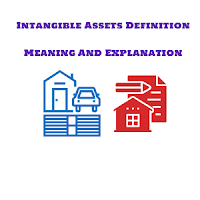Intangible Assets Definition, Meaning And Explanation
Those Assets that provide benefits to the business on the basis of reasonable evidence and that have no Physical Existence. Examples are Goodwill, Patents, Franchise, Copyrights, etc.
Intangible Assets having Limited, Long-Term Or Permanent Life. Cost is very important factor in these types of Assets. If cost is significant in acquiring it, then it is recognized on Balance Sheet as An Intangible Assets otherwise it is recognize as Revenue Expenditure and recorded in Income Statement / Profit And Loss Account.
Example: Suppose a company (Acquirer) acquires the business of other company (Acquiree), then to obtain excellent customer service belonged to this Acquiree Company, Acquirer Company paid amount to obtain such reputable image of the company. This favourable reputation is a Goodwill for Acquirer.
Intangible Assets Journal Entry
When an Intangible Assets is acquired, then following Accounting Journal Entry is recorded in the Book of Business as shown below:
Intangible Assets a/c XXX
Cash a/c XXX
(Intangible Asset Acquired For Cash)
The Ledger of Intangible Assets is prepared to record all Business Transactions related to it like Acquiring of Assets, etc and closing balance is transferred to Balance Sheet at the end of Accounting Period.

Comments